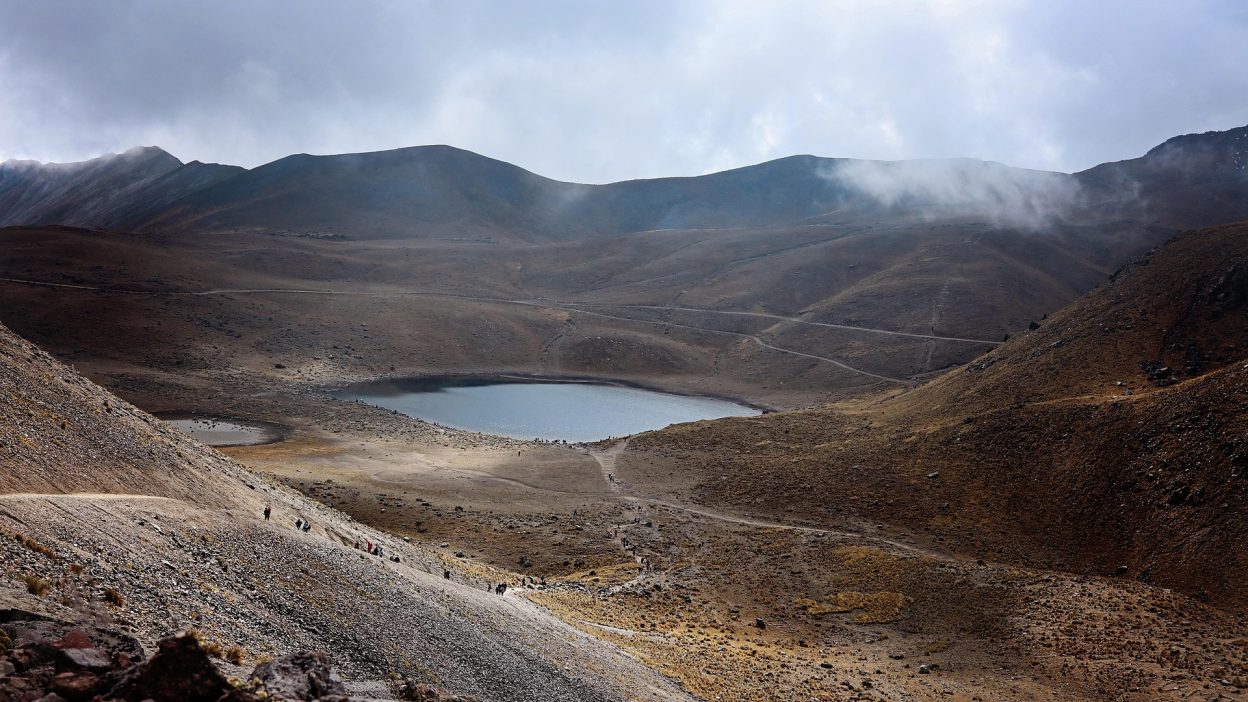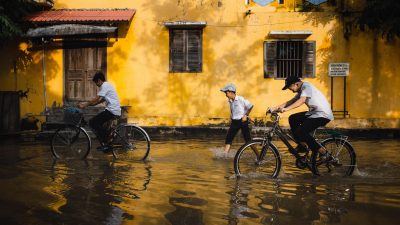The Forgotten Plague That Erased Millions From Mexico’s History
1. A Plague from Nowhere: How the Cocoliztli Epidemic Wiped Out Millions
Between 1545 and 1548, Mexico experienced one of the deadliest epidemics in history, known as the Cocoliztli epidemic. The catastrophe primarily affected the indigenous population, leaving a trail of devastation unlike anything seen before. At a time when Spanish colonial rule was tightening its grip, the outbreak reshaped the fate of the region, reducing entire communities to ghost towns and leaving survivors in a state of terror.
The term Cocoliztli, meaning “pest” or “plague” in the Nahuatl language, was used by the indigenous people to describe an illness that ravaged their lands with terrifying speed. It caused severe fever, bleeding, and an almost certain death, particularly among the Aztecs and other native tribes. The Spanish colonisers, while not entirely immune, suffered significantly fewer casualties, leading many to speculate that European diseases had once again found a way to devastate the native populations.
While some historians attribute the epidemic to hemorrhagic fever caused by a native virus, others argue that it may have been worsened by harsh climatic changes, famine, and the aftershocks of European conquests. However, the exact cause of this deadly outbreak remains one of the most hotly debated medical mysteries in history.
2. The Devastation of the New World: What Was Cocoliztli?
The Cocoliztli epidemic remains one of the most enigmatic and horrifying disease outbreaks in recorded history. Its symptoms were brutal and fast-acting, leading to widespread panic, suffering, and mass graves. Unlike common European diseases such as smallpox or measles, this plague exhibited unusual clinical characteristics that baffled both the indigenous healers and the Spanish settlers.
Those infected with Cocoliztli displayed symptoms such as:
- High fever
- Severe headaches
- Bleeding from the nose, eyes, and mouth
- Darkened skin and yellowing of the eyes
- Acute abdominal pain, leading to convulsions
- Delirium and neurological symptoms
The disease progressed rapidly, often leading to death within three to four days. The indigenous population, already weakened by forced labour, malnutrition, and previous waves of European diseases, succumbed at an alarming rate. The Spanish priests and chroniclers of the time recorded heart-wrenching scenes of entire villages disappearing, with corpses piling up faster than they could be buried.
Some modern researchers have suggested that Cocoliztli may have been caused by a strain of Salmonella enterica, particularly Salmonella Paratyphi C, which causes enteric fever. Others propose that it was a form of viral haemorrhagic fever, similar to Ebola. However, with no definitive genetic evidence, the disease continues to be a subject of intense scientific scrutiny.
3. The Grim Numbers: Death Toll, Casualties, and Statistics
The Cocoliztli epidemic of 1545–1548 is considered one of the deadliest disease outbreaks in human history. The scale of destruction was unimaginable:
- Up to 15 million indigenous people perished, wiping out a vast majority of the population.
- In some regions, over 80% of native communities were completely eradicated.
- Survivors were left traumatised, with entire cities and villages turning into burial grounds.
- The epidemic primarily affected the Aztecs and other native civilisations, while the Spanish settlers experienced significantly lower mortality rates.
The sheer magnitude of deaths altered the social and political fabric of Mexico forever. Entire ruling classes collapsed, leaving the Spanish colonial forces with little resistance, effectively sealing their dominance over the region.
4. Climate, Conquest, and Catastrophe: The Factors That Fuelled the Epidemic
The Cocoliztli epidemic was not merely the result of a biological disaster—it was the perfect storm of multiple crises. Several key factors contributed to the catastrophe:
a) Harsh Environmental Conditions
The outbreak occurred during the megadrought of the mid-16th century, a period of extreme dryness that devastated crops, leading to famine and malnutrition. Starvation weakened immune systems, making the indigenous population more vulnerable to disease.
b) The Aftermath of Spanish Conquest
The Spanish colonisers had already introduced foreign pathogens like smallpox, measles, and influenza. By the time Cocoliztli struck, the indigenous people had suffered multiple waves of disease, leaving them with little resistance.
c) Overcrowded and Unsanitary Conditions
The Spanish system of forced labour and population displacement caused overcrowding in cities and poor sanitation, which acted as a breeding ground for disease. The lack of medical knowledge and proper hygiene further worsened the crisis.
5. The Social and Psychological Impact: How a Plague Changed Mexico Forever
The psychological toll of the Cocoliztli epidemic was immense. The indigenous people saw it as divine punishment, a sign that their gods had abandoned them. Ritual sacrifices and desperate prayers became common as survivors sought divine intervention.
The Spanish rulers, meanwhile, interpreted the epidemic as a sign of divine favour, believing that God was clearing the land of “heathens” to make way for Christianity. This strengthened colonial control as surviving indigenous populations were forcibly converted to Christianity under the belief that their faith might protect them from further plagues.
6. Was It Genocide? The Dark Questions Surrounding the Epidemic
The Cocoliztli epidemic raises a disturbing question: was it purely a natural disaster, or was it exacerbated by colonial oppression?
Some historians argue that Spanish policies—forced labour, enslavement, and land dispossession—weakened the indigenous population to the point where they could not survive a crisis like this. Others go further, suggesting that European settlers might have deliberately used biological warfare to eradicate resistance.
While there is no direct evidence of intentional biological warfare, the epidemic undoubtedly accelerated the Spanish conquest by effectively wiping out the opposition.
7. Theories on the Cause of the Epidemic
- Salmonella Theory: Some scientists believe Salmonella enterica (Paratyphi C) was responsible for the disease. DNA evidence from ancient remains suggests this could be a strong possibility.
- Viral Haemorrhagic Fever: The symptoms—bleeding, fever, neurological disorders—are strikingly similar to Ebola and other haemorrhagic fevers.
- Climate Change and Malnutrition: Drought and food shortages weakened the population, allowing an otherwise mild infection to become fatal on a massive scale.
- A Combination of Factors: The most accepted theory is that multiple factors, including existing diseases, Spanish oppression, and extreme climate conditions, created the perfect storm for disaster.
8. How Does Cocoliztli Compare to Other Historical Epidemics?
When compared to other pandemics, the Cocoliztli epidemic ranks among the deadliest. Unlike the Black Death or Spanish flu, which spread globally, Cocoliztli was largely confined to Mexico, making it one of the worst regional epidemics in recorded history.
9. Could a Similar Epidemic Happen Again?
With climate change, urban overcrowding, and emerging infectious diseases, many experts warn that a future Cocoliztli-like event is possible. The lessons from 1545 remain highly relevant, especially in a post-pandemic world.
10. Conclusion: The Forgotten Epidemic That Shaped Latin America
The Cocoliztli epidemic was not just a health disaster—it was a turning point in history. It sealed the fate of Mexico’s indigenous civilisations and cemented Spanish colonial rule. Yet, it remains one of the least discussed pandemics in history, despite its staggering death toll.
FAQs
- What was the Cocoliztli epidemic?
A deadly disease outbreak in 1545–1548 that killed millions in Mexico. - What caused the epidemic?
Likely a mix of Salmonella, viral haemorrhagic fever, and climate-driven famine. - Did the Spanish bring the disease?
The Spanish did not directly bring it, but their colonial rule worsened conditions. - Why did it affect indigenous people more?
Malnutrition, previous diseases, and forced labour left them vulnerable. - Could it happen again?
Yes, with new viruses and climate change, similar outbreaks remain a threat.




